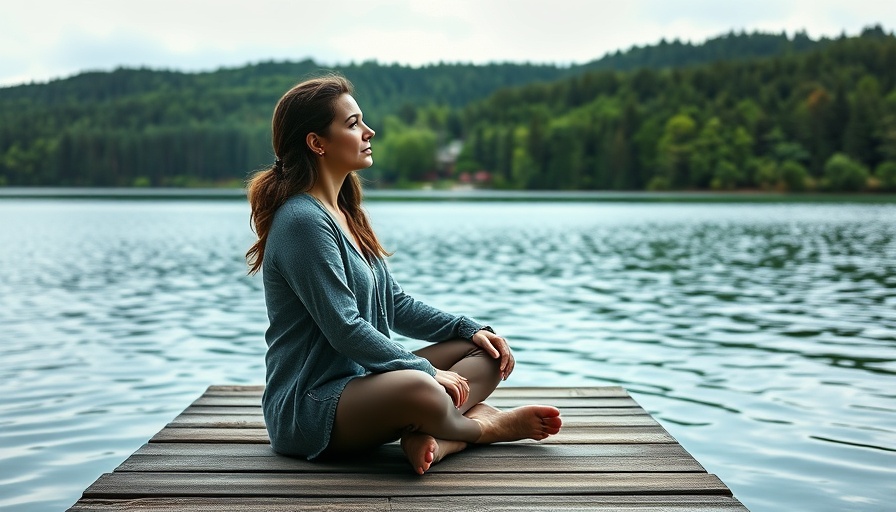
Why Meditation Matters in Today’s World
In an era defined by rapid change and constant connectivity, many are feeling overwhelmed. The quest for peace and clarity has propelled meditation into the spotlight as a vital tool for maintaining emotional balance. Given this growing interest, understanding the foundational principles of meditation isn’t just helpful—it’s essential for fostering a fulfilling practice.
The 8 Essential Rules of Meditation
The journey into meditation is often marked by uncertainty and questions. If you’re new to this practice or just looking to refresh your approach, here are the 8 “rules” of meditation that can significantly enhance your experience:
1. Find a Comfortable Posture
Many imagine meditation as an intricate art requiring elaborate poses. In reality, the first step is finding a posture that feels comfortable for you. This could mean sitting cross-legged on the floor, sinking into your favorite chair, or even lying down. Comfort is paramount; if your body isn't at ease, your mind won't be either. A good sitting position encourages alertness—keeping your spine straight and shoulders relaxed is essential.
2. Focus on Your Breath
Your breath is not just a biological function; it acts as an anchor during meditation. By tuning into your breathing patterns, you center your awareness in the present moment. Notice the air filling your lungs and the sensations of each inhale and exhale. Should your thoughts stray, gently redirect your focus back to your breath. This simple act not only quiets the mind but also encourages mental clarity.
3. Accept What Arises Without Judgment
A common myth about meditation is that it’s about chasing a tranquil mind. The reality? Thoughts will inevitably pop up. Instead of struggling against this natural tendency, embrace your thoughts as they come. Acknowledge them, then let them drift away like clouds in the sky. This practice teaches self-acceptance, cultivating a compassionate relationship with your thoughts.
4. Be Consistent
Like any skill, meditation flourishes with practice. Setting aside time each day—even if it’s just a few minutes—can deepen your practice and enhance its benefits. You might feel tempted to skip sessions in your busy life, but consistency can accommodate and bring structure to your meditation journey.
5. Create a Dedicated Space
Your environment plays a big role in your meditation practice. Finding a quiet, unobtrusive space can help signal your mind that it’s time to meditate. Whether it’s a corner of your living room adorned with candles, cushions, or perhaps plants, a dedicated space can enhance focus and provide a comforting atmosphere conducive to relaxation.
6. Embrace the Discomfort
Don’t shy away from discomfort, be it physical or emotional. Instead, recognize it as part of your meditation journey. Hopefully, this acceptance allows greater awareness of your feelings and sensations. Remember, the path of achieving a heightened sense of awareness doesn’t come without its bumps. Embracing these challenges can lead to more profound growth.
7. Explore Different Techniques
Meditation isn’t a one-size-fits-all practice. Experimenting with various techniques can help find what resonates with you. From mindfulness meditation to guided imagery, numerous styles exist to enrich your experience. Each approach provides a unique avenue to explore your consciousness.
8. End with Kindness
After your meditation session, take a moment to reflect. Observe any sensations or feelings, and approach them with kindness. This closing can establish a sense of completion and encourage gratitude for the time you’ve dedicated to your inner self. It also reinforces the nurturing aspect of meditation that extends into daily life.
The Final Rule: Make It Personal
The real takeaway? There’s no singular “right way” to meditate. Just as your body reacts differently to exercise, so does your mind to meditation. Tailor these rules to suit your journey. Embrace the freedom to adapt, allowing room for personal growth in your practice.
Embracing the Journey
Taking your first steps into meditation doesn’t have to feel daunting. By applying these 8 rules, you equip yourself with the tools to cultivate a rewarding practice. Remember, it’s not about perfection but about the experience itself—a journey towards a deeper self-understanding and emotional balance.
As you explore these principles in your meditation practice, consider how they might influence other facets of your life. Are there areas where you can apply the same acceptance or consistency? The insights gained can transform not just your practice but your overall well-being. So, whether you’re looking to calm your mind or simply seeking a space for personal growth, meditation opens a door to a more fulfilled life.
 Add Row
Add Row  Add
Add 




Write A Comment